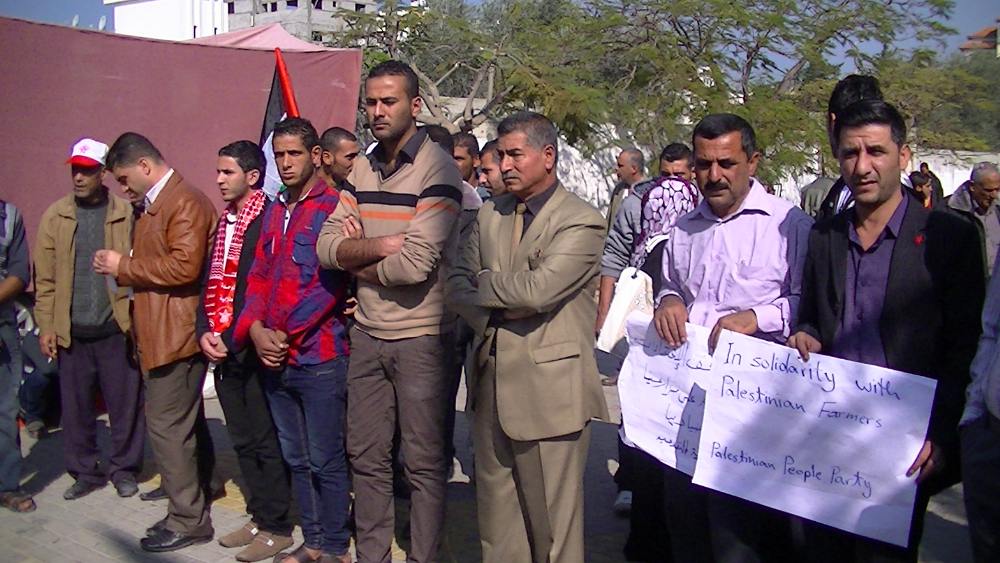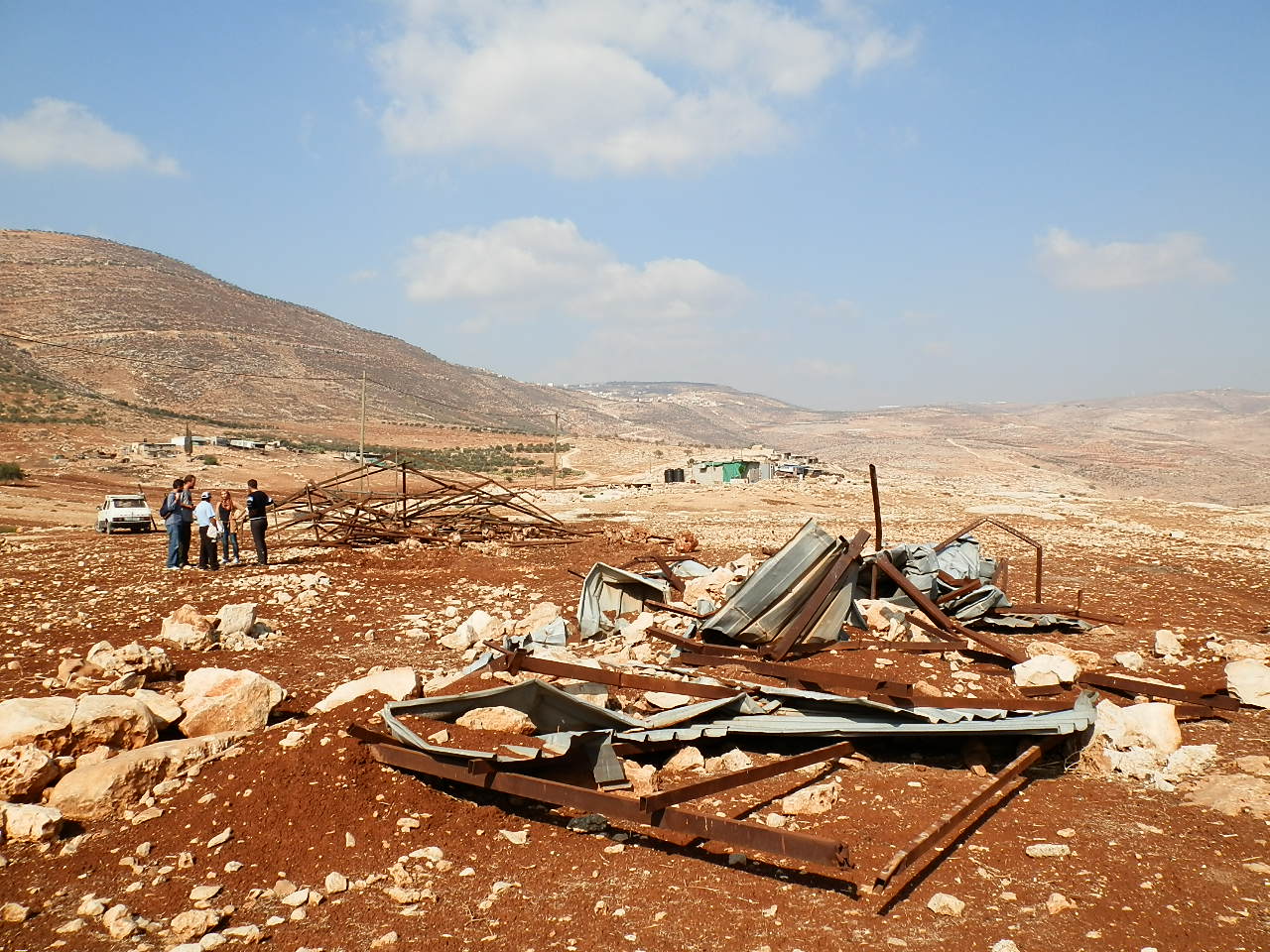Year: 2013
-
Gazan farmers and fisherfolk call for food sovereignty and an end to Israeli attacks
20th November 2013 | Corporate Watch, Tom Anderson and Therezia Cooper | Gaza, Occupied Palestine On 20th November 2013, hundreds of farmers and fisherfolk gathered outside the United Nations Special Coordinator for the Middle East (UNSCO) in Gaza City to demand that the international community take action to prevent the Israeli military’s attacks against them and to…
-
Shelter and water tank demolished in the village of Tawayel
20th November 2013 | International Solidarity Movement, Nablus Team | Tawayel, Occupied Palestine Today, 20th of November, the Israeli army entered Tawayel, a village next to Aqraba, south of Nablus, to demolish a well and a shelter belonging to two families. At approximately 6:00 in the morning, for the third time this year, around 30 soldiers arrived with…



